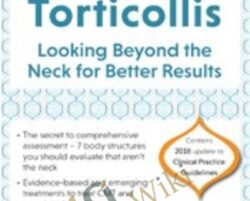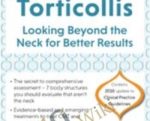My name is Rosemary Peng, PT, MST. As a clinician who has worked for more than 20 years in pediatric settings, I’ve seen and treated patients with congenital muscular torticollis (CMT). In the past, I focused too much of my attention on treating the neck only and not checking for other asymmetries that can occur. This resulted in seeing minimal gains. What was I missing? There had to be a better way to treat this population. Finally, I discovered that by including 7 body structures in my examination I could effectively treat my patients by strengthening neck muscles, promoting better head posture, and improving fine and gross motor development of the child.In this recording, learn and practice evidence-based tools found in the updated 2018 Clinical Practice Guidelines which I use to accurately assess and treat infants. You’ll enhance your skills by learning proven treatment techniques as well as alternative approaches that don’t make your patient feel discomfort and results in better outcomes. Ease the fear of parents or caregivers with clear goals and education. Walk away feeling confident and comfortable using these proven strategies that immediately carry over into your clinical setting.Evaluate types and causes of infant torticollis and positional skull deformities.Demonstrate evidenced-based examination and treatment strategies for infants with CMT.List seven red flags that may warrant referral to a physician.Develop a plan of care using five components of first-choice interventions based on the Clinical Practice Guidelines (CPG).Examine emerging interventions that have not yet established efficacy.Create evidenced-based discharge planning, caregiver education, and recommendations for follow-up care.TORTICOLLIS AND POSITIONAL SKULL DEFORMITIES – WHEN TO TREAT OR REFERThree types: Brachycephaly, plagiocephaly, scaphocephalyCraniosynostosisWhen and how to treat itWhen is it time for consultation with neurosurgeryHOW TO PROPERLY ASSESS A CHILD WITH CMTPostureCervical range of motion: active and passiveMuscle function scale for InfantsThoracic and lumbar spineMuscle flexibility of extremitiesScreen for developmental hip dysplasiaSkin, facial, and skull asymmetriesVisual motor skills: tracking, presence of nystagmus, midline controlClassification of level of severityEXAM LABHOW TO BEST TREAT CMT – LOOKING BEYOND THE NECKCervical PROMAddressing other asymmetries below the neckPositioningIncorporate play into treatmentStrengtheningAddressing visionWhy and how we address fine and gross motor skillsTummy time challengesAdapting the environmentCaregiver educationINTERVENTION LABOTHER THERAPEUTIC APPROACHES FOR CMTMicrocurrentMyokinetic stretchingKinesiological tapingTAMO approachTOT and other collarsBotoxSurgeryEMERGING INTERVENTIONS WITHOUT EVIDENCE OF EFFICACYManual therapy/cervical manipulationCraniosacral therapySoft tissue massageFeldenkraisTotal Motion ReleaseWHEN TO REFER FOR CONSULTATION7 Red flags that indicate the need for referral to MDsHOW TO IMPROVE YOUR GOAL WRITINGSymmetrical movementMotor developmentParent/caregiver understandingDISCHARGE PLANNING AND FOLLOW-UP RECOMMENDATIONSCriteria for dischargeParent/caregiver understandingFollow-up screening recommendationsCASE EXAMPLESTag: Treating Torticollis: Looking Beyond the Neck for Better Results – Rosemary Peng Review. Treating Torticollis: Looking Beyond the Neck for Better Results – Rosemary Peng download. Treating Torticollis: Looking Beyond the Neck for Better Results – Rosemary Peng discount.
 Instant Publisher Biz Partner Program – Joel Peterson
₹22,908.00
Instant Publisher Biz Partner Program – Joel Peterson
₹22,908.00
 7 Day Cash Campaign – Scott Oldford
₹5,478.00
7 Day Cash Campaign – Scott Oldford
₹5,478.00
Treating Torticollis: Looking Beyond the Neck for Better Results – Rosemary Peng
₹12,450.00




